
by Grow Up Conference | Nov 13, 2024 | Media Partners, The New Agora
Sex, Truth, and Masculinity
By Robert Cinque
The secret to authentic masculine power is hidden in sex.
I’m not talking about sexual intercourse or about how to give her an orgasm. I’m talking about the fact that this universe is 100% electromagnetic and that electricity is the masculine side of the equation. Magnetism is the feminine side.
Electricity creates magnetic fields, and magnetic fields create electricity. A coin has 2 sides too, which is a metaphor for how the Singularity is one, but appears as two polar opposites
The electric current discharges light/energy from a negative (feminine) pole to a positive (masculine) one: a pulse. The negative magnetic (feminine) field is a toroidal ring that curves around the positive electric (masculine) pulse, like a doughnut around your finger. The masculine aspect of the toroidal ring is straight, centrifugal, analytical and expressive. The feminine is curved, centripetal, intuitive and receptive. The toroidal ring contains every letter of the alphabet as a line or a curve, or both.
The Electricity Model of Relationship
Therefore, if you want to be fully masculine, understanding the primacy of electricity is essential. I have observed and now comprehend the dynamics of pulse, followed by, rest. This simple fact has rocked my world.
She is the Earth; he is the Sun. Every morning she stretches and opens to his glorious light and warmth. She cannot get enough of his light and love. He penetrates her with his love, and she incubates and nurtures his masculine power – returning the favor with children, food and openhearted warmth.
In our world, we are witnessing the long-term effects of emotional and sexual obstructions between men and women. The current long-suffering narrative of how the Patriarchy has fucked women over so badly, and dominated them so brutally, has made the feminist movement inevitable.
Are men just selfish pricks who don’t care about women and only want to get laid? Looks like the sisters have had to retreat among themselves, become lesbians, and maintain solidarity in the absence of real men in order to protect their sanity. I do agree that men can be pricks, but the problem is much more terrible than this.
Down and Dirty Truth
The problem is the failure of us men, and women, to understand ourselves at the deepest and most fundamental level. Instead of red blooded men and women who are passionate and powerful, we have labels and political categories for each other. Instead of mutual respect and emotional/spiritual intimacy and support, we have poor me, fuck you, which is simply blame and withdrawal.
Women hate men because we betrayed them. We betrayed them because we betrayed ourselves. We betrayed ourselves when we believed the lies that we were told by those who were also lied to: our parents, priests and professors.
Forget about those liars, no matter how well-meaning they might have been. The real problem comes from those who unquestionably believe them. Who cares what liars say, anyway? They can safely be ignored because they are irrelevant to solving the problem.
What cannot be ignored is what you are as a man.
As a man you are:
• Alive as the power and brilliance of love, care and protection
• Polarized as the masculine pole of electrically-charged power and intention
• The husband caretaker of the vineyard of the feminine
• The seed bearer who impregnates the earth with vision, purpose and destiny
• The masculine bank which steadfastly bears the weight of the passionately tumultuous feminine river of love, grace and beauty.
We have forgotten that Life is sacred, that love is central to all life, and that we have the power to overcome the loveless agendas of this world.
Light up the Dark
Women hate men for very good reasons. As men, we are obligated to respond well. We didn’t see ourselves clearly so we couldn’t see them. Those days are over. It is urgently necessary that all men, everywhere, step-up by immediately abandoning all notions of manhood that ignore the core reality of masculinity: Light.
What the woman needs more than anything is the light and warmth of your living heart to shine in the cavernous darkness of her infinite nature. Otherwise, she eats you alive in her contempt. That’s Kali, the East-Indian Goddess of destruction. She wears the skulls of those she has slain around her neck.
The feminine is dark, cold and aloof. She is starving to death, shivering in the cold emptiness of your muted Light. She does have her own Light and she doesn’t actually need yours, but most don’t know that. All she knows is that it’s cold.
What happened to you? What do you shine your Light on? Video games? Porn? Alcohol? What happened to your good intentions?
She doesn’t want you to worship her or to make her the central focus of your life. That’s just the conventional, default position she takes absent her own spiritual development. Worshiping her is the version that men fall prey to when what they want is too small.
She wants you to meet your highest calling as a man; she wants to see the results of your sincere devotion to truth and love. She wants you to love her properly and completely. How so?
You do this by “installing structural supports and bulkheads in her terrain” designed to correctly hold and contain her watery passion. Otherwise, the river floods the village when dikes and levees are absent or damaged. You are the river bank who will either build the waterways and aqueducts or drown with the rest of the villagers.

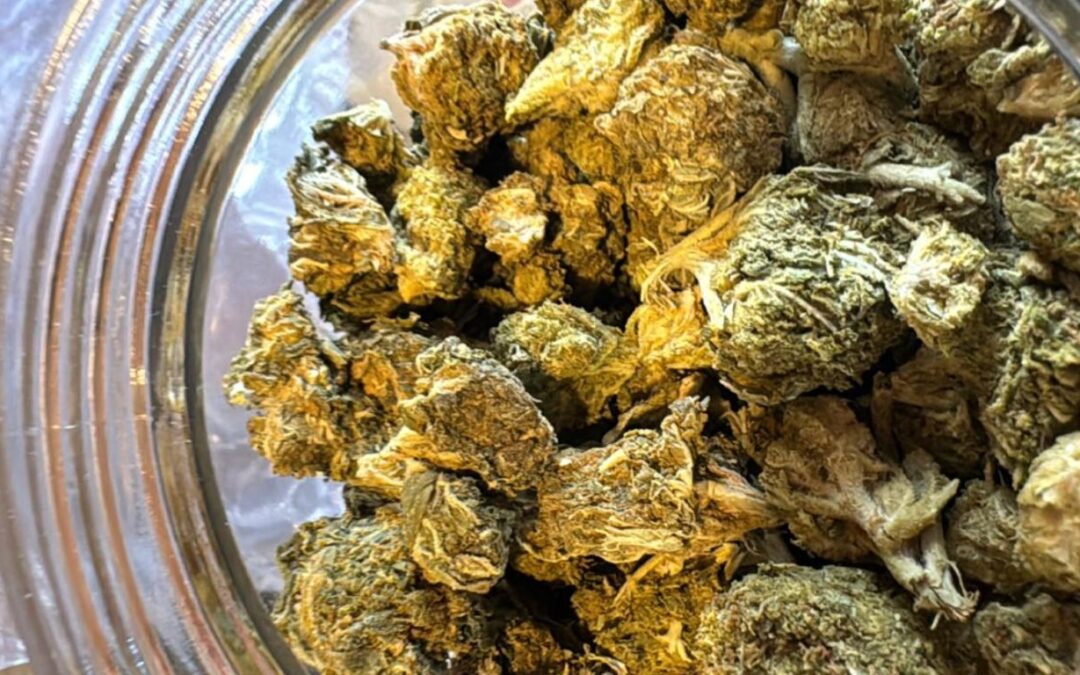
by Grow Up Conference | Nov 13, 2024 | Media Partners, Stratcann
On November 11, The Special Enforcement Section of the RCMP/HRP Integrated Criminal Investigation Division executed a search warrant at an illegal cannabis store located on Lucasville Rd., seizing cannabis products and arresting two.
Police seized edibles, pre-rolled joints, resin, shatter, and vape products.
The search came the day after Halifax Regional Police (HRP) received a report of an aggravated assault by a man armed with a knife at the same location. The victim suffered serious injuries and attended hospital. The two men are known to one another.
A 51-year-old man from Annapolis Royal and a 59-year-old woman from Chester were arrested. They will be facing charges of Possession for the Purpose of Distributing and Possession for the Purpose of Selling under the Cannabis Act.
The man and the woman were released on conditions and are scheduled to appear in Dartmouth Provincial Court on December 30, 2024, at 9:30 a.m.
The assault and cannabis investigations are being led by the RCMP/HRP Integrated Criminal Investigation Division with assistance from the RCMP Halifax Regional Detachment and Halifax Regional Police.
On October 17, the Cumberland Integrated Street Crime Enforcement Unit (CISCEU) arrested two people before executing a search warrant at a location on South Albion St. The search warrant followed public complaints about the ongoing sale of cannabis from the illegal storefront.
Related Articles

by Grow Up Conference | Nov 13, 2024 | Cannabis News Wire, Media Partners
A ballot initiative to legalize marijuana for recreational use in Florida failed Tuesday, receiving 55.9% of the vote but falling short of the 60% threshold needed to amend the constitution.
The initiative, known as Amendment 3, sought to allow adults over 21 to purchase cannabis for adult use from already-existing medicinal dispensaries, with the potential to extend to other retailers if the Legislature approved.
The primary financial backing for Amendment 3 came from Trulieve Cannabis Corp. (CSE: TRUL) (OTCQX: TCNNF), Florida’s leading medical cannabis company, which contributed approximately $145 million to the campaign. This made up the great majority of the campaign’s $153 million budget as of October.
However, opposition was strong, with Governor Ron DeSantis and the Florida Republican Party voicing concerns. DeSantis argued that legalization would have a detrimental effect on people’s quality of life, including worries about possible marijuana-related odors.
In South Dakota and North Dakota, similar efforts to legalize recreational cannabis were also underway but did not gain enough support. The two states have now voted on recreational cannabis measures three times, with each attempt failing to pass.
Meanwhile, Nebraska voters took a different direction, approving two measures—Initiative Measures 438 and 437—to permit and regulate medical cannabis. Measure 437 passed with 70.7% support and allows individuals with a healthcare provider’s recommendation to use and possess up to five ounces of medical cannabis.
Measure 438, garnering 66.9% support, establishes a regulatory framework for the medical cannabis industry in Nebraska, including the creation of the Nebraska Medical Marijuana Commission. The measure authorizes registered private entities to manufacture, distribute, and dispense medical cannabis.
As of the time of the 2024 elections, recreational marijuana had been legalized in 24 states and D.C., covering about 53% of the U.S. population. Additionally, 38 states and D.C. had laws permitting medical cannabis use. Despite these state-level policies, cannabis remains illegal at the federal level, where possession and sales are still subject to legal penalties, including fines and prison time.
Other states had a range of measures on their ballots that went beyond cannabis legislation. Some states passed amendments to prohibit non-U.S. citizens from voting, and Arizona passed a measure allowing local law enforcement to implement immigration laws. Various other proposals addressed taxes, wages, and educational policies. For example, school choice initiatives were considered but ultimately failed in Nebraska and Kentucky.
Many of the measures were brought to the public through citizen petitions, bypassing state legislatures, while others were introduced by legislators.
About CNW420
CNW420 spotlights the latest developments in the rapidly evolving cannabis industry through the release of an article each business day at 4:20 p.m. Eastern – a tribute to the time synonymous with cannabis culture. The concise, informative content serves as a gateway for investors interested in the legalized cannabis sector and provides updates on how regulatory developments may impact financial markets. If marijuana and the burgeoning industry surrounding it are on your radar, CNW420 is for you! Check back daily to stay up-to-date on the latest milestones in the fast -changing world of cannabis.
To receive SMS alerts from CNW, text CANNABIS to 888-902-4192 (U.S. Mobile Phones Only)
For more information, please visit https://www.CannabisNewsWire.com
Please see full terms of use and disclaimers on the CannabisNewsWire website applicable to all content provided by CNW, wherever published or re-published: https://www.CannabisNewsWire.com/Disclaimer
CannabisNewsWire
Denver, CO
www.CannabisNewsWire.com
303.498.7722 Office
Editor@CannabisNewsWire.com
CannabisNewsWire is powered by IBN

by Grow Up Conference | Nov 13, 2024 | Grow Opportunity, Media Partners
(CNW) Calgary – High Tide Inc., the high-impact, retail-forward enterprise built to deliver real-world value across every component of cannabis, announced today that it has closed the Final Tranche (as defined herein) of its previously disclosed subordinated debt facility of $1,000 principal subordinate secured debentures of the Company for aggregate gross proceeds of $15 million at a price of $900 per Debenture, pursuant to subscription agreements with arm’s length institutional credit providers. Pursuant to the Final Tranche, the Company issued 5,000 Debentures.
The Debentures will mature on July 31, 2029, and bear interest at a fixed rate of 12% per annum on drawn amounts, payable quarterly. The Debentures are governed by the terms and conditions of a debenture trust indenture between the Company and Olympia Trust Company in its capacity as trustee and collateral agent. The Company may redeem the Debentures at any time prior to maturity, in whole or in part, upon sixty days’ notice and payment of certain penalties as applicable. The Company’s obligations under the Debentures are collaterally secured by general security and guarantee agreements from the Company and certain subsidiaries of the Company and rank in second position to the Company’s existing senior lender.
Pursuant to the terms of the subscription agreements, the Debentures were to be drawn in two tranches: (i) $10,000,000 principal amount which was previously drawn on July 31, 2024, and (ii) $5,000,000 principal amount which has now been drawn.
Ventum Capital Markets is acting as financial advisor to the Corporation in connection with arranging the Facility.
The net proceeds of the Facility will be used for debt repayment maturing on December 31, 2024 ongoing development of the Company’s business model and general working capital purposes.
All figures are expressed in Canadian dollars unless otherwise noted.

by Grow Up Conference | Nov 13, 2024 | Media Partners, Psychedelic News Wire
A new study has found that psychedelic-assisted therapy is viewed by psychologists as a life-changing tool that has the potential to facilitate emotional breakthroughs and psychological insights for individuals with a range of mental conditions.
The study was carried out by researchers at Griffith University, who interviewed twenty psychologists from different parts of Australia.
Jordan Negrine, a Ph.D. candidate with the institution’s school of Applied Psychology, was the study’s lead researcher. Mr. Negrine stated that the participants demonstrated both caution and enthusiasm when asked about the therapeutic potential of psychedelic-assisted therapy.
However, he continued, the psychologists also displayed limited awareness of the treatment’s implementation process in the country, particularly those linked to delivery and prescription procedures.
The study found that psychologists believed that psychedelic-assisted therapy possessed the capacity to relieve pressures on the mental health system by addressing underlying causes of psychological distress and helping reduce psychological barriers to treatment. A majority of the psychologists also argued that psychedelic-assisted therapists could benefit from a psychedelic experience as part of their training.
Access to professional training and support is important, especially since clinical outcomes from psychedelic experiences depend on a patient’s psychological state as well as the external environment. Training programs that equip professionals with the skills needed to navigate all that comes with psychedelic-assisted therapy have been limited in Australia.
In the last couple of years, the demand for more psychologists to be equipped with training and knowledge to deliver this treatment effectively and responsibly has increased.
In 2023, Australia became the first globally to legalize the use of psychedelics to treat various mental health conditions. This was made possible after the Therapeutic Goods Administration reclassified psilocybin and MDMA to Schedule 8 from 9. This move allowed psychiatrists to apply for approval to prescribe psilocybin for treatment-resistant depression and MDMA for the treatment of post-traumatic stress disorder.
In February of this year, the trailblazing psychedelic therapy clinic, Clarion Clinics, opened its doors to the public.
The study also found that most psychologists believed that education, training programs, and endorsement by credible institutions would eliminate barriers to the safe delivery of psychedelic-assisted therapy in clinical practice.
Additionally, psychologists pointed out that under the right conditions, the treatment was safe to use, non-addictive, and more effective as compared to traditional pharmacotherapies. They noted that this treatment was also linked to fewer instances of aggression and imposed fewer mental and physical side effects.
The study’s findings were reported in Drug and Alcohol Review.
As entities like Seelos Therapeutics Inc. (NASDAQ: SEEL) make progress in their efforts to develop psychedelic medications approved by regulators, psychiatrists, psychologists and other healthcare professionals could become even more positive towards these novel treatments.
About PsychedelicNewsWire
PsychedelicNewsWire (“PNW”) is a specialized communications platform with a focus on all aspects of psychedelics and the latest developments and advances in the psychedelics sector. It is one of 60+ brands within the Dynamic Brand Portfolio @ IBN that delivers: (1) access to a vast network of wire solutions via InvestorWire to efficiently and effectively reach a myriad of target markets, demographics and diverse industries; (2) article and editorial syndication to 5,000+ outlets; (3) enhanced press release enhancement to ensure maximum impact; (4) social media distribution via IBN to millions of social media followers; and (5) a full array of tailored corporate communications solutions. With broad reach and a seasoned team of contributing journalists and writers, PNW is uniquely positioned to best serve private and public companies that want to reach a wide audience of investors, influencers, consumers, journalists and the general public. By cutting through the overload of information in today’s market, PNW brings its clients unparalleled recognition and brand awareness. PNW is where breaking news, insightful content and actionable information converge.
To receive SMS alerts from PsychedelicNewsWire, text “Groovy” to 888-902-4192 (U.S. Mobile Phones Only)
For more information, please visit https://www.PsychedelicNewsWire.com
Please see full terms of use and disclaimers on the PsychedelicNewsWire website applicable to all content provided by PNW, wherever published or re-published: https://www.PsychedelicNewsWire.com/Disclaimer
PsychedelicNewsWire
San Francisco, CA
www.PsychedelicNewsWire.com
415.949.5050 Office
Editor@PsychedelicNewsWire.com
PsychedelicNewsWire is powered by IBN

by Grow Up Conference | Nov 12, 2024 | Media Partners, The New Agora
The A=432 Hz Frequency:
DNA Tuning and the Bastardization of Music
The A=432 Hz Frequency: DNA Tuning and the Bastardization of Music
Brendan D. Murphy, Guest
GA=440Hz: Not Quite Music to My Ears
Humankind is the largely unwitting victim of a frequency war on our consciousness that has been waged for decades, if not millennia. The goal has clearly been to keep us as gullible and subservient as possible, through multifarious means.
In modern history in particular, there has been what Dr. Len Horowitz has referred to as the strategic “militarization” of music. This happened in 1939 when the tuning of the note ‘A above Middle C’ to 440 Hz was adopted in the world of music. In 1910 an earlier push to effect the same change was met with limited success. Three decades later, the British Standards Institute (BSI) adopted the A=440Hz standard following staunch promotion by the Rockefeller-Nazi consortium—“at the precise time WWII preparations were being finalized by the petrochemical-pharmaceutical war financiers.”[i] This was the year that A=440 became the international standard.
The American Federation of Musicians had already accepted the A440 as standard pitch in 1917, and the U.S. government followed suit in 1920.[ii] One must surely ask why Nazi propaganda minister, Joseph Goebbels, argued for this odd intrusion into musical creativity, persuading Hitler’s supposed enemies in Britain to adopt this “superior” standard tuning for the “Aryan/Master Race.” What did the Nazis (and their secretive by well-documented US financiers) have to gain from this?
It is interesting, also, to note that in October 1953, despite the British and Nazi push for the arbitrary A=440 standard (which is “disharmonic” vis à vis the physico-acoustic laws of creation governing reality), a referendum of 23,000 French musicians voted overwhelmingly in favour of A=432Hz.[iii] Many, many musicians, through recent centuries have expressed their strong preference for the A=432 reference pitch.
“This [A=432 Hz] tuning was unanimously approved at the Congress of Italian musicians in 1881 and recommended by the physicists Joseph Sauveur and Felix Savart as well as by the Italian scientist Bartolomeo Grassi Landi.” [iv]
The Vibration of Sound
According to preliminary research, analysis, and professional discussions by Walton, Koehler, Reid, et al., on the web, A=440Hz frequency music conflicts with human energy centers (i.e., chakras) from the heart to the base of the spine [the lower four]. Alternatively, chakras above the heart are stimulated. Theoretically, the vibration stimulates ego and left-brain function, suppressing the “heart-mind,” intuition and creative inspiration.[v]
Interestingly, the difference between 440 and 741 Hz is known in musicology as the Devil’s Interval.
For maximum suppression of human consciousness, the frequencies we naturally resonate with, and which are the most biologically and psycho-spiritually enhancing, must be maximally suppressed. Ancient Egyptian and Greek instruments have reportedly been found to be tuned to 432 Hz. As far as many guitarists are concerned, A=432 Hz seems to be the most practical, optimal, and most bio-friendly resonant tuning we have, although many musicians have also favoured A=444. (A=444 Hz belongs to a different scale, where C=528 Hz.)
Picture: http://www.wakingtimes.com/wp-content/uploads/2015/09/Cochlear-300×2391.jpg
But there’s more: the cochlea, the part of the inner ear that converts acoustic impulses into electrical signals, has a seashell-like spiral shape. A bilateral cross-section of the cochlea is mathematically describable through the Fibonacci series (the Golden Ratio/Phi as manifested in nature). [vi] According to Chas Stoddard inA Short History of Tuning and Temperament, this fractality/recursiveness allows octaves to be decoded at the same point in each layer of the spiral, and may therefore be why we can discern octaves at all (meaning, that without this cochlea design, we would just hear pitch rising or lowering, we would not be able to identify that, for example, 256 Hz is C, as is 512 Hz also C).[vii] The octave concept would be almost meaningless and sonically undetectable to us.
Somehow, Austrian genius visionary Rudolph Steiner (1861-1925) was on to all of this. He said:
“Music based on C=128hz (C note in concert A=432hz) will support humanity on its way towards spiritual freedom. The inner ear of the human being is built on C=128 hz.”
The fact that Phi/Golden Ratio is so key in morphogenesis (the biological process that causes an organism to develop its shape) in humans and throughout nature suggests that there may be an interesting yet little-known relationship between the galactic harmonic of 432 that shows up in our solar system and the Golden Ratio.
Picture: http://www.wakingtimes.com/wp-content/uploads/2015/09/Tuning-Forks-300×1881.jpg
A=432 is bio-neutral at worst, and is widely considered bioenergetically enhancing or healing if employed intentionally. Meditation music at 432 Hz is certainly relaxing and soothing, though I don’t consider there to be anything “transformative” about it, and transformative measures are what we so desperately need to intercede in our collective path at this time. As a musician and someone who uses the Solfeggio frequencies to perform DNA and kundalini activations for people who seek those healing and evolutionary services, I would actually go so far as to argue that, at this point in our history, the Solfeggio C at 528 Hz and not 512 Hz may be even more valuable to us in our search for reconnection to Self and Source — and most definitely facilitates people’s unplugging from the Matrix. It is widely associated with DNA activation, repair, and human transformation. (For more on this topic, please see my previous article: Diary of a DNA Potentiator – a Personal DNA “Hack-tivation” Story.)
Note the visible light spectrum and colour wavelengths. Look for 528 and notice where you land: in the region of the “green ray”, esoterically speaking. The higher harmonic of the green ray/frequency is absorbed and metabolized by the heart chakra vortex. It is no coincidence that the wavelength of visible light at 528 nm is also green. The one is a harmonic of the other. If humanity needs to supercharge anything in our bioenergetic anatomy at this point, it is surely our heart intelligence, which conduces to compassion, empathy, and intuition. (We have more than enough of the cunning of the ego-driven cephalic intelligence.) Here lies a clue to the potency and importance of C=528 but I don’t want to digress too far.
Picture: http://www.wakingtimes.com/wp-content/uploads/2015/09/Frequencies1.jpg
To return to the main thrust now. Maria Renold, in her book Intervals Scales Tones and the Concert Pitch C=128hz, claims conclusive evidence that A=440Hz tuning (above scientific “C” Prime=128/256/512 Hz, where A=432 Hz) “disassociates the connection of consciousness to the body and creates anti-social conditions in humanity.” Modern “Equal Temperament (ET)” tuning was supposedly the excuse for musicians to play consonance, but, according to researcher Brian T. Collins (who strongly endorses Renold’s book), it actually diminishes perception of tone and resonant harmony.[viii]
Many people appear to endorse the view that, while A=440 music is more exciting (or aggressive, for some), it is more mind-oriented and disconnected from the human feeling centres, particularly the heart (which has by far the largest EM field of all bodily organs, including the brain, which it can actually entrain). Disconnecting the heart from the brain is — as history (and our present condition) shows us — catastrophic on a planetary scale; for many reasons, but fundamentally, it disconnects us from our innate wisdom and compassion as sentient beings, thus disconnecting us from each other and the other intelligent beings we share this planet with (not to mention the planet itself which is a living intelligence).
Ancient tuning practices employed the “Just Intonation” system of tuning. It featured “pure intervals between every note that were mathematically related by ratios of small whole numbers leading to a much purer sound.” From about the 16th century onwards, “Twelve-Tone Equal Temperament” tuning, according to Joachim Ernst-Berendt, commenced the mistuning of all consonant intervals except the octave.[ix]
As a guitarist(who writes music primarily on an electric guitar, I prefer to tune up to A=444/C=528 rather than further down-tuning to 432 (I already drop a full step down on the electric and one of my acoustics and don’t want to lower string tension any further). 528 derives from the ancient Solfeggio scale, as re-discovered by Dr. Joseph Puleo, a co-researcher and co-author with Dr. Len Horowitz of the well-researched and confronting book Healing Codes for the Biological Apocalypse. At A=444 I can feel the resonance almost on a cellular level—the vibrations go right through me, and the guitar feels almost like a part of me. The tone is beautiful and bright; highly resonant. This is not the case when I use 440 Hz (standard Western tuning). Electric guitars, lacking a resonant cavity, don’t make the distinction as easily, however, that doesn’t mean that our cells don’t appreciate the subtle difference.
I will discuss more on the Solfeggio scale and why 528 is so important in a coming article.
The Curious Case of 432
We see above an interesting relationship between the 432 and the number of completion arising as we look at this material below. The numbers suggest that the “universal” or solar constant of 432 has to do with the “completion” (or completeness) of the manifest material world.
Diameter of sun = 864,000 miles (432 x 2)
- Interestingly 8+6+4 = 18 (1+ 8) = 9 the number of completion
Diameter of moon = 2,160 miles (5 x 432 = 2,160)
- 2+1+6+0 resolves to a 9, as does 4+3+2 = 9 and 5 x 9 = 45 and 4 + 5 = 9 as well.
Precession of the Equinoxes of Earth = 25,920 years (60 x 432) [x]
- 2+5+9+2+0 also equals 9, while 6 x 9 = 54 and 5 + 4 = 9 also.
Interestingly, the leading acoustician in Beethoven’s time was Ernst Chladni (1756-1827), the godfather of cymatics. His music theory textbook explicitly defined C as 256/512 Hz, the “scientific” tuning. (The A above middle C in this standard scale is 432 Hz.)
Perhaps this is to do with 432-squared — 186,624 (1+8+6+6+2+4 = 9) — being within 1 percent accuracy of the speed of light, (186,282 miles per second, which also resolves to a 9!). The square root of the measured speed of light is 431.6(!) By deductive reasoning, we might speculate that “notes tuned relative to A432 harmonize directly with the light body [auric fields] allowing the vibrations to penetrate, and through entrainment, bring your energetic essence into balance. Entrainment is the tendency for a strong vibration to influence a weaker vibration.”[xi]
Inversely, A=440 tuning may produce a dissonant or “agitative” effect on the aura/mind — and anything that disrupts/disturbs DNA will create contraindications in the aura due to DNA’s innate sound-light translation mechanism. The human aura, of course, is the closest thing we have yet been able to point to as “consciousness” or “mind” in the manifest measurable world, as I demonstrate in The Grand Illusion : a Synthesis of Science & Spirituality.
Using 256Hz as the reference for C (where A=432), all occurrences of C are a power of 2. Interestingly, the Schumann resonance — earth’s electromagnetic “heartbeat” existing within the atmosphere between the earth’s surface and our ionosphere — ranges from about 7.83 to 8 Hz on average — very close to (and even the same as) 23. This isn’t terribly surprising if you consider the frequency of earth’s axial rotation: “Earth’s ‘pitch’ (cycles per second/Hertz) as it rotates is G, a fourth below the theoretical C that lies 24 octaves below middle C, when C=256Hz. So C=256/A=432 is in tune with the Earth’s rotation,”[xii] which is “in tune” with the speed of light, which is “in tune” with the diameter of the sun, which is “in tune” with the diameter of the moon, which is “in tune” with the precession of the equinoxes!
That’s a lot of harmony, which is exactly what we should expect from a holofractal (scaled) plasma-based universe.
C#=544 Hz, NOT 554 Hz!
A.K.A The Breakthrough that Didn’t Quite Break Through
In a groundbreaking research collaboration initiated in the late 1980s, biologist David Deamer and composer Susan Alexjander sought to directly ascertain the frequencies emitted by the bases of our DNA (A, G, C, T). They did this by directly measuring the infrared absorption spectra of DNA molecules. These DNA frequencies were then arranged as “scales” of tones, and subsequently used as the basis for Alexjander’s musical compositions.
The atomic bonds within these base molecules “bend, stretch, and rock upon absorbing infrared light with a specific frequency related to the energy and strength of the bond and the mass of the nucleus of the atom. A tighter, smaller bond from, say, hydrogen, will absorb light with a higher wavenumber (number of waves per centimeter), and a higher ‘note’ in the infrared spectrum.” A spectrophotometer was used to ascertain the frequencies of the different bases. Inside this device, infrared light with frequencies ranging from 600 to 3000 wavenumbers (in units of cm-1) was passed through each sample, being absorbed at specific frequencies, which the instrument plots as a spectrum. Once the wavenumber was identified, it was converted to hertz using the following equation: Frequency (Hz) = velocity (speed of light) x wavenumber
Because this process involves infrared light—not sound—frequencies, huge numbers (megahertz) were obtained, that, if translated directly into hertz would be far beyond human hearing (and thus useless for creating a musical composition, as intended). Recognizing that if they were to halve the numbers they were getting—and keep halving (decreasing them by octaves at a time) until the number fell within the audible range of sound frequencies, they would end up with the same notes only at much lower (audible) octaves. Each DNA base yielded 15 – 18 notes; 60 in all. Interestingly, it appears that none of the bases emitted an A# — it was the only note of the diatonic scale missing.
Once this data was collected, it was converted into a human hearing range and programmed into a Yamaha DX7 IID synthesizer. They needed to use a “special electronic keyboard… because the tunings that were derived were almost all microtones” (tones smaller than a regular semi-tone, the smallest interval generally used in Western music).[xiii] This presented Alexjander with a formidable challenge regarding creating actual musical compositions out of these tightly-packed clusters of DNA base notes. At first, there was no seeming organization or order to what she was seeing or hearing, when experimenting with the 60 different microtonal DNA notes on her synth.
Then, after weeks and weeks of experimentation with different sound combinations, a “tonal center” began to emerge. One pitch in particular seemed to lend meaning and coherency to the challenging microtonal morass — a pitch common to all four bases: C#(!)
Adenine: 545.6 Hz
Guanine: 550
Thymine: 543.4
Cytosine: 537.8
Average DNA Hz = 544.2
This is where their project gets particularly interesting for those of us interested in sound-based healing, Just Intonation tuning, and the acoustic laws underlying creation.
You see, in today’s bastardized standard tuning (Equal Temperament), C#=554 Hz/A=440, and C=523. Look carefully at the frequency values of each DNA base above and you see that all four of them are fairly close to being tuned to this standard tuning (where A=440, the “Nazi tuning”). This C# “is positioned almost exactly in the center of the absorbency rates, and shows up as the average. This C# seems to act as a balancer for the entire spectrum of frequencies,” as Alexjander put it. She further observes that most of the gongs, bells, and drums of the non-Western world are tuned to this C# tonal center — as if we are collectively trying to subconsciously tune to something (natural cosmic harmonics).
What made my jaw drop, however, was not that the four DNA bases’ tuning averaged out at 544 Hz, fairly close to standard tuning where C#=554 Hz (a discrepancy of only 10 Hz). It was, rather, the fact that when A=432 Hz, as in the ancient Just Intonation tuning system based on nature itself, C# is precisely 544 Hz — exactly what emerged as the dominant, central “organizing” DNA base frequency in Alexjander and Deamer’s research! Astonishingly, Alexjander and Deemer have apparently missed this crucial correlation.
A=432 Hz is the tuning of the Cosmic Keyboard or Cosmic Pitchfork, as opposed to the A440 Hz modern “standard.” It places C# at 136.10 Hz [544 Hz four octaves higher] “Om,” which is the main note of the Sitar in classical Indian music and the pitch of the chants of the Tibetan monks, who tell us “It comes from nature.” – Dameon Keller. [xiv]
Now we are seeing a real basis for precisely why sound healing works—on every level of our beingness. It is a harmonic rule that whatever octave you are toning at, it will automatically resonate the other octaves of that note. So, even if you are toning vocally within the limited human vocal (or hearing) range, and you are toning into a chakra, if you have selected the “right” note, it can and will correct cymatic deformations in that chakra, even though the magnetic vortex of said chakra will be spinning at a frequency (and harnessing light at frequencies) far beyond the range of regular sense perception, and thus, invisible to most people. The law of harmonic resonance means that you will immediately affect light/matter on many octaves of the same note simultaneously. Because sound (vibration) organizes light/matter into form, it is potentially the most potent tool in a healer’s arsenal. Sound does strange and exotic things other tools cannot; “junk” DNA, for example responds to sound—codons can be turned on or off using acoustic vibrations, and our cell membranes (which are the “brains” of the cells) have antennae that detect sound vibrations and can pass them into the cellular matrix.
According to clairvoyant Barbara Brennan, former physicist and founder of the Barbara Brennan School of Healing, when she uses her voice in this way for healing chakra deformities, the chakra will stand up and spin correctly almost immediately. From there, it only takes a few seconds once a chakra is corrected on the first/etheric level to then become the correct color on the second level (emotional body) of the field.[xv]
Well known biologist Bruce Lipton has stated that, aside from the better-known “lock and key” cell receptor sites, there are also antenna-like structures (“primary cilium”) on the cell membranes in our bodies that respond to vibrational frequencies:
Receptor antennas can also read vibrational energy fields such as light, sound, and radio frequencies. The antennas on these energy receptors vibrate like tuning forks. If an energy vibration in the environment resonates with a receptor’s antenna, it will alter the protein’s charge, causing the receptor to change shape…Biological behavior can be controlled by invisible forces as well as it can be controlled by physical molecules like penicillin…[xvi]
The ciliated respiratory mucosa. www.oldenglishsheepdogclubofamerica.org
Lipton’s material illustrates something about the mechanisms involved in epigenetic change, in this case epigenetic shifts triggered by sound. “Toning,” as intuitive channeller Barbara Marciniak is informed by her apparently interdimensional Pleiadian muses, “is a key to releasing stored knowledge. It unlocks a doorway and allows information to flood into your body…[I]n a very subtle way, it changes your perceptions.”[xvii]Given that our DNA is tuned to the harmonic laws of creation—as seen in Just Intonation tuning—at C#=544 Hz, it makes complete sense that healing instruments like Tibetan sound bowls may be tuned to this natural scale.
I’ll be back later to share more about C=528 Hz and the importance of the Solfeggio frequencies. In the meantime, please remember that you are nonlocally and gravitationally connected to the resonant frequencies of the cosmos and that no one stands alone “outside” of the cosmos or cut off from everything (though they may feel like that at times). We’re all part of this huge resonant system, participating in dynamic feedback loops with intelligent subsystems such as the sun, the moon and the earth. Our sense of separation is strictly a brain-based “grand illusion.”
References: please see online
About the Author
Brendan D. Murphy – Co-founder of Global Freedom Movement and host of GFM Radio, BrendanD.Murphy is a leading Australian author, researcher, activist, and musician. His acclaimed non-fiction epic The Grand Illusion: A Synthesis of Science & Spirituality – Book 1 is out now! Come and get your mind blown at www.brendandmurphy.net
“What a wonderful job of collating and integrating you have done! Every person in the field of ‘paranormal’ psychology or related topics should have this book as a major reference.” – Dr. Buryl Payne

by Grow Up Conference | Nov 12, 2024 | Cannabis News Wire, Media Partners
Germany recently saw its first cannabis social club—Social Club Ganderkesee—announce the distribution of cannabis to its members, marking a new milestone in the country’s journey toward regulated marijuana access. The nation legalized the possession and personal cultivation of marijuana for adults in April. However, until recently, there were limited legal means for acquiring the substance.
Social Club Ganderkesee started growing cannabis in July after receiving a permit from Lower Saxony’s Agriculture Minister, Miriam Staudte. According to Daniel Keune, the club’s chairman, the membership represents a broad demographic, ranging from 18 to 70 years old. Each social club is restricted to 500 members, and each member can purchase up to 50 grams of cannabis per month.
Lawmaker Carmen Wegge of the Social Democratic Party (SPD) emphasized the importance of the clubs in assisting in the reduction of the illicit marijuana market. She noted that the clubs offer a valuable option for people who may not want to grow cannabis on their own.
Meanwhile, cities like Frankfurt and Hanover are advancing separate pilot programs aimed at widening access to cannabis in controlled ways over the next five years. Frankfurt’s program would enable controlled commercial sales of cannabis to a group of selected participants. The initiative would allow individuals to buy up to 25 grams daily, with a cap of 50 grams per month, from four authorized shops throughout the city.
Participants would need to commit to health monitoring through evaluations and surveys conducted by medical professionals. However, people with certain conditions—such as mental health issues, those who are pregnant or breastfeeding, and minors—would not be eligible for the program. The program aims to offer legal cannabis at competitive prices, ideally to reduce reliance on the black market, where prices often range from €8 to €10 ($8.59-$10.74).
Meanwhile, Hanover’s program would avail cannabis through pharmacies for around 4,000 residents. Belit Onay, Hanover’s Mayor, stated that the project is intended to address the reality of marijuana use in the community while mitigating the risks associated with illegal markets. Marijuana is expected to be available under this program by next year.
Germany’s cannabis reform is expected to unfold in two phases. The initial phase involves personal possession, cultivation, and the establishment of social clubs. The second phase, which is still in development, is expected to introduce a comprehensive commercial cannabis sales model.
Karl Lauterbach, the Health Minister and a key advocate for legalization, has indicated that the government is carefully considering the second part of the law. As legalization progresses, there is growing public and political pressure to accelerate the timeline for broader commercial access.
Companies like Tilray Brands Inc. (NASDAQ: TLRY) (TSX: TLRY) with an eye on expanding their international footprint are likely to monitor the developments in Germany to see if any opportunities open up.
About CNW420
CNW420 spotlights the latest developments in the rapidly evolving cannabis industry through the release of an article each business day at 4:20 p.m. Eastern – a tribute to the time synonymous with cannabis culture. The concise, informative content serves as a gateway for investors interested in the legalized cannabis sector and provides updates on how regulatory developments may impact financial markets. If marijuana and the burgeoning industry surrounding it are on your radar, CNW420 is for you! Check back daily to stay up-to-date on the latest milestones in the fast -changing world of cannabis.
To receive SMS alerts from CNW, text CANNABIS to 888-902-4192 (U.S. Mobile Phones Only)
For more information, please visit https://www.CannabisNewsWire.com
Please see full terms of use and disclaimers on the CannabisNewsWire website applicable to all content provided by CNW, wherever published or re-published: https://www.CannabisNewsWire.com/Disclaimer
CannabisNewsWire
Denver, CO
www.CannabisNewsWire.com
303.498.7722 Office
Editor@CannabisNewsWire.com
CannabisNewsWire is powered by IBN
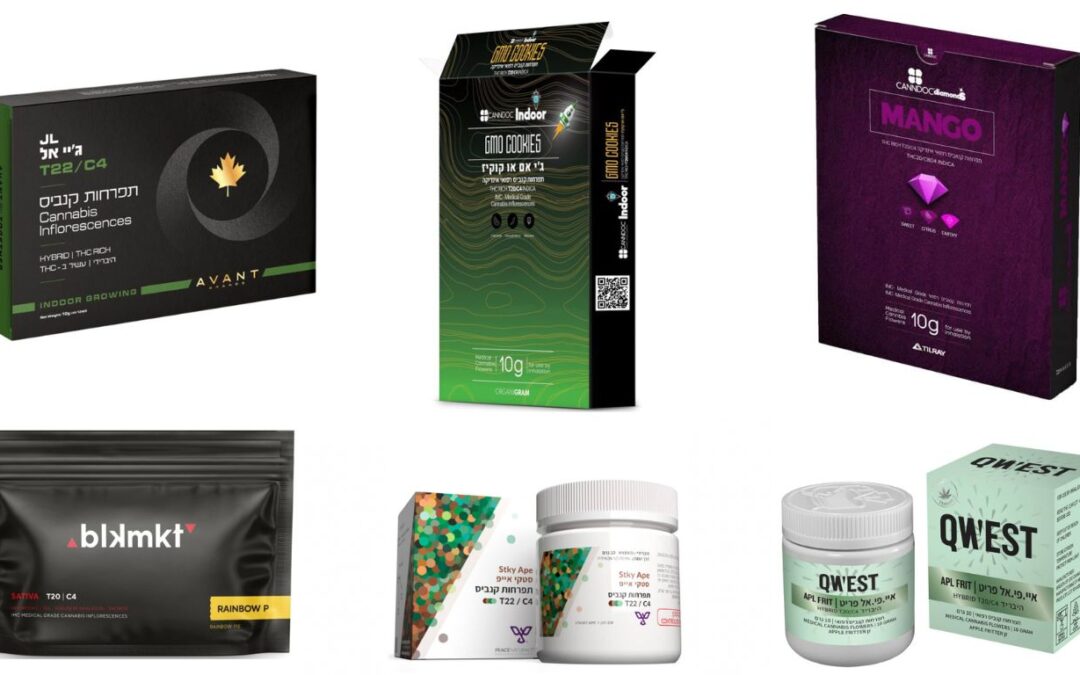
by Grow Up Conference | Nov 12, 2024 | Media Partners, Stratcann
Israel’s Ministry of Economy has proposed levies of up to 175% on Canadian cannabis products being sold in the country’s medical cannabis program.
In a report published on November 10, Israel’s Director of Import Administration and Commissioner of Anti-dumping measures at the Ministry of Economy shared the agency’s final report.
The report determined acceptable prices for specific Canadian cannabis companies based on their cooperation with the report and sale prices in the Canadian market. A final ruling on the proposed levies is still pending.
The investigation, which was first announced this past January, was around allegations of “product dumping” of Canadian cannabis into the Israeli market. In July, the government agency released its preliminary report on the topic, proposing tariffs from 63% to 369%, depending on the corporation of the companies involved.
Initially, the commissioner recommended a floating levy or tariff of 63% for Decibel, 74% for Pure Sunfarms, 112% for Organigram, and 369% for all other producers.
The new, sprawling 126-page final report proposes fees starting as low as 2% for Decibel cannabis, 33% for Village Farms (Pure Sunfarms), 39% for Organigram, and 77% for Tilray. All other companies would face a levy of up to 175%.
The new recommendations are still subject to a final ruling from an advisory committee before potentially coming into force. The preliminary report states that the commission will also submit a report on its findings to the World Trade Organization.
During the investigation, Israeli cannabis companies said they were forced to sell products at or below cost due to competition with lower-priced Canadian cannabis. Producers also said they were forced to destroy large amounts of cannabis they could not sell, in part due to these imports.
Israel imported 78,394 kilograms of cannabis from 2020-2023, with 62,345 kilograms coming from Canada, or approximately 80%. Other countries of origin were Portugal, Uruguay, and Uganda. However, since 2020, the ratio of Israeli products compared to imported cannabis products has increased with domestic cannabis eclipsing imports in 2021, 2022, and 2023.
According to the data from the Israeli Ministry of Health, in 2020, the country imported 14,778 kilograms of cannabis and produced 13,922. By 2023, that figure had shifted to 15,950 kilograms imported (of which 14,408 kg was from Canada) and 51,750 produced domestically.
Israel is not the only country that has seen concerns raised about the impact. Some cannabis producers in Australia have shared similar concerns.
Many Canadian companies have touted their export sales to countries like Israel as a way to command a better price than in the domestic market and deal with the large volume of product in their vaults.
Despite the increased costs associated with exports, including special approvals and certifications, producers often find better payment terms in the export market than selling into provincial markets, where payments can take weeks or even months.
The new Israeli report includes feedback from Canadian and Israeli cannabis producers and stakeholders. The report argues that Canadian producers sell cannabis into the Israeli market at a lower price than can be sold in the Canadian market, a claim disputed by Canadian stakeholders like the Cannabis Council of Canada and the cannabis companies they interviewed.
Related Articles

by Grow Up Conference | Nov 12, 2024 | Media Partners, Stratcann
The Cronos Group reported USD$34.3 million in net revenue, $3.6 million in gross profit, and $7.3 million in net income in its third quarter 2024 report for the three months ended September 30, 2024 (all figures in USD).
This represented a significant year-over-year increase in net revenue and income for the cannabis producer, with a 38% increase of $9.5 million from the three months ended September 30, 2023. Cronos attributes this to an increase in sales domestically and in the international market.
However, gross profit was down 9% year-over-year, representing a decrease of $0.4 million from the third quarter in 2023. Cronos attributes this loss mainly to inventory-related purchase accounting adjustments resulting from the Cronos GrowCo transaction on July 1, 2024. This loss was also somewhat offset by higher cannabis flower and extract sales in the Canadian market, higher cannabis flower sales in Israel, and higher cannabis flower sales in other countries.
The bulk of Crono’s cannabis sales are in Canada and Israel. For the three months ending September 30, 2024, $26.3 million of those sales were for cannabis flower, while $7.8 million were for cannabis extracts. From those sales, $24.1 was in Canada’s medical and non-medical cannabis market, $7.3 million was in Israel, and $2.9 million was from sales in other countries.
Cronos also recently announced a $51 million (CAD$70 million) expansion of Cronos Growing Company Inc. (Cronos GrowCo) to address increased international demand for its cannabis. Cronos GrowCo reported preliminary unaudited net revenue to third parties, excluding sales to the Company, of approximately $2.7 million in the second quarter of 2024. Q3 2024 represents the first quarter where Cronos consolidates Cronos GrowCo’s results in its financial statements.
The company’s adjusted gross profit in Q3 2024 was a 170% increase from the same quarter in 2023.
“Our results this quarter demonstrate that our long-term strategy is working,” said Mike Gorenstein, Cronos chairman, president and CEO. “With record net revenue and a disciplined approach to operating expenses, Cronos operates more efficiently and effectively than ever before, and we anticipate long-term margin improvement.
“Our consolidation of Cronos Growing Company has further strengthened our supply chain, which we anticipate will lead to improved margins and allow us to meet the increasing global demand for high-quality cannabis. With an industry-leading balance sheet, we are well-positioned to expand into new legal markets and drive future growth opportunities.
“As international demand continues to rise, particularly in markets like Germany, the UK, and Australia, the investments we’ve made in our infrastructure and global partnerships are paying off.”
In Q3 2024, Cronos brand Spinach was the top-selling cannabis brand in Canada, according to Hifyre. The brand’s edibles were in the number one position with a 17.2% market share in Q3 2024, while its flower products held the number one spot with a 6% market share.
In September, Cronos joined a group of cannabis cultivators that had filed an administrative petition in the District Court of Jerusalem, Israel, against the Trade Levies Commissioner and certain Israeli and Canadian businesses in relation to the Israeli government’s concerns about “product dumping” into their domestic market from Canadian cannabis companies.
The Israeli government had proposed a levy on Canadian cannabis products, which could be as high as 369% on Cronos products. In their most recent quarterly report, Coronos says that on November 10, 2024, Israel’s Trade Levies Commissioner published final findings under which Cronos would be subject to a proposed duty of 175%, pending a ruling from an advisory committee.
Related Articles

by Grow Up Conference | Nov 12, 2024 | Garden Culture Magazine, Media Partners
We hear many references to the “gut microbiome” lately. Thanks in large part to the work of fermentation enthusiasts, there has been a cultural turn toward cultivating healthy “microherds” of beneficial organisms within our bodies. Without necessarily realizing it, we’ve fundamentally changed our perception of ourselves as animal creatures. Modern scientific methods and technologies confirm and reveal the interconnectedness, even inextricability, of each of us with other species in our physical space.


We are constantly exposed to an immeasurable diversity of microbial life. Studies weave knowledge about mental and emotional wellness, neurological function, stress tolerance, and nervous system regulation with examinations of bacteria and yeasts inside and on our bodies (1). We are becoming more aware of the human-as-holobiont.
Greater than the sum of its parts: what is a holobiont?
If the microbiome may be described as an “assemblage of communities” of microorganisms (2), a holobiont is the “supraorganism” formed by a centralized individual and this “hosted” population.


The choice of “who gets in” isn’t always within control, as in the case of viruses against which no previously developed immunity exists. However, with intention, we can work toward providing a supportive microbiome, creating the conditions for swift, well-resourced, and decisive responses.
Coevolution through natural selection has guided the development of plant genetics that reach new heights of yield and environmental resilience when allowed to play with their full deck. This transformative perspective will enable us to conceptualize our cultivated plants as holobionts.
Why view plants as holobionts instead of individuals of a single species in a community with other organisms?
Only in the most strictly managed laboratory setting (reserved for propagation by tissue culture) is it desirable to pursue conditions approaching sterility.
Yet, we are rightly concerned about the advantageous growth of soil fungi that negatively impact young plant material, causing damp-off. We worry about transmitting viruses and other pathogens, especially those which have thrived and proliferated in our growing spaces.
Maintaining a clean growing environment, observing closely, and responding to issues with interventions or procedure changes is good practice. While this does work, it can lead to treating symptoms, not causes.
When we envision each plant as a holobiont, we acknowledge that while the general functions of the immune system and metabolism are encoded in the DNA of the plant, the effectiveness and health of those systems are highly reliant on microorganisms, some of which have coevolved and are highly specialized to the plant.
Incredibly, even in sanitized substrates and when controlled for exposure by air currents and through fertigation, the microbiomes of young plants can be rich with life. The seeds introduce diverse bacteria and fungi to the microbiome (3). These species are ‘vertically’ transmitted, from generation to generation, instead of being obtained ‘horizontally’ through the external environment. Vertically transmitted microbes are often among the most beneficial.


Seedlings and newly struck cuttings are busy establishing their root systems and leaves to acquire nutrition, gain energy and develop structures needed to be buoyant in life’s coming waves. It can be helpful to encourage the horizontal transmission of known beneficial microbes after reducing the number of possible encounters with powerful antagonists.
Cuttings come with microbiomes thriving in and on the aerial parts of the donor plant. Depending on the assessed health of those mothers, it is a judgment call as to whether there is more reason to dip and strip these surface microbes to eliminate the transfer risk of spores and other potential threats to a plant without its vibrant root microbiome.
Economies of space and resources and regulatory guidelines shape decisions about optimizing and prioritizing the needs of targeted holobionts within an ecosystem. Certain products are disallowed as sprays within a certain pre-harvest period for consumer protection, and environmental health is considered when it comes to the allowable application of nutrients, other agricultural amendments, and pest-management products.
Thankfully, data-supported evidence is being accumulated to demonstrate the real value of attending to the health of plant microbiomes. Where possible, allowing a population of diverse holobionts to coexist (e.g., in succession gardening and intercropping) favors the meetings of mutually beneficial organisms. This, in turn, has demonstrable economic relevance.
Who can add known beneficials to their grow?
Just as live food cultures are easily found in grocery stores, like apple cider vinegar “with the mother”, microbial inoculants have become commonplace in garden centres and grow stores. Any grower who can purchase pre-made soil mixes or fertilizers may now experiment with products certified to contain measurable amounts of beneficial bacteria and fungi.
Following the producers’ instructions is essential. There is no reason to believe that “more is better”; the plants will select those with which they work best, and these will increase under favorable conditions.
It is a good idea to consider plants’ changing needs as they grow: demands on their microbiomes will change in character and intensity. Just like “veg” and “bloom” nutrient mixes, it is not uncommon to see products designed with those same general life stages in mind. Others may contain a mix of species that will be ‘assembled’ and proliferate on or within the plant according to its needs as it develops.
In commercial settings, it is handy (or necessary) to reference the list of well-researched, specially selected and bred beneficial bacteria and fungi in purchased products. Many have been certified for use in organic production.
How to work with plants as holobionts varies according to growing style.
As the main diversity of species in a unique plant’s root microbiome is horizontally assembled in the soil, it is crucial to consider the traits of your chosen growing medium.
Living soil growers and regenerative land stewards are familiar with various ways to acquire, support, and multiply diverse populations of beneficial microbes, making them available to plants via their root zones. Some of these include brewing Actively Aerated Compost Teas (AACTs), collecting and propagating Indigenous Microorganisms (IMOs), and using no-till,’ chop and drop’, and intercropping (companion planting). Soil specialists are building capacity in agricultural networks, and you can consult with one or take courses yourself to gain from this holistic school of thought.
In these growing systems, the plant holobionts are generally given as much opportunity as possible to select and assemble their constituent populations of bacteria and fungi. When a singular species dominates an agricultural space, as in the case of monocropping, especially where genetically identical plants are grown, the preferences of that particular holobiont type reduce microbial diversity in areas under its strong influence.
Controlled environment growers using soilless mediums must take a different approach to ensure the continued availability and population balance of certain microbial populations. Often, these growers may have several subtypes of a commercially important species (for example, cannabis) under cultivation, and these also demonstrate variance within their microbiomes. Research suggests this is guided by the genetic favoring of certain partner microbes for producing target phytochemicals (e.g., THC, CBD, terpenes)(4).
Once acquired, aspects of a holobiont found within plant structures, as opposed to on the surfaces, may be less impacted by the ebb and flow of water in a hydroponic system. Ensuring the cleanliness of fertigation infrastructure (drip systems, especially recirculating ones) requires balancing the regular use of antimicrobial agents (like hydrochlorous acid and hydrogen peroxide) with their effects on the holobiont’s wellness.
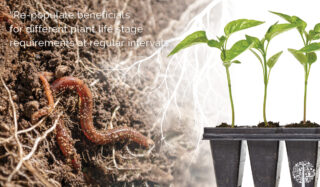

Re-populate beneficials for different plant life stage requirements at regular intervals. At transplant, and upon altering lighting schedules or nutrient regimens, it’s a good strategy to ‘top up’ the diversity of available microbes so the plant can accumulate more of what will best serve them at that time.
In an intensively managed system where there are no insects to crawl up from the dirt, hop from leaf to leaf, or buzz about to sample nectar, a good argument can be made for misting or fogging with microbiome-supporting solutions, especially where seeds are being produced for future plantings. Instructions for appropriately cleaning plant parts designated for consumption before storage and use will be part of this protocol.
Strike a balance between allowing beneficials to thrive and not completely excluding or eliminating exposure to challenges. Various stressors enable plants to produce immune responses to maximize the production of commercially-valued secondary metabolites. Some other phytochemicals (plant-serving molecules but helpful to humans) contribute to post-harvest storage capacity and nutritional value. Since energy is always being used to power these processes, consider supplementation a means to keep the plant from having to manufacture this energy itself and use it to maintain its microbiomes.
Forward Thinking
Crop monocultures becoming extremely vulnerable to a particular disease has been historically explained by their loss of ability to “fight off” a unique, unfamiliar attacker. Shifting perspective to these crop plants as holobionts, we can understand better how disease resistance can become a function not only of supporting the immunity of plants within their lifetimes but also considering the inheritance of beneficial microbes and their co-evolutionary relationship with the genetics of the socially valued species.
Advancements in DNA research technologies and revelations of how microbial interactions with individuals influence the expression of specific genes, are exposing even greater complexity. More than ever before, we can explore the downstream, heritable impacts of plant microbiome wellness on domesticated plant species. Revisioning crop plants as invaluable co-stewards of the land makes it possible for guided, intentional, and more harmonious co-existence with unseen populations.
References:
(1) ncbi.nlm.nih.gov/pmc/articles/PMC5581153/pdf/oncotarget-08-53829.pdf
(2) dx.doi.org/10.1016/j.mib.2017.07.001
(3) doi: 10.3389/fmicb.2021.737616
(4) doi: 10.3389/fmicb.2020.00491











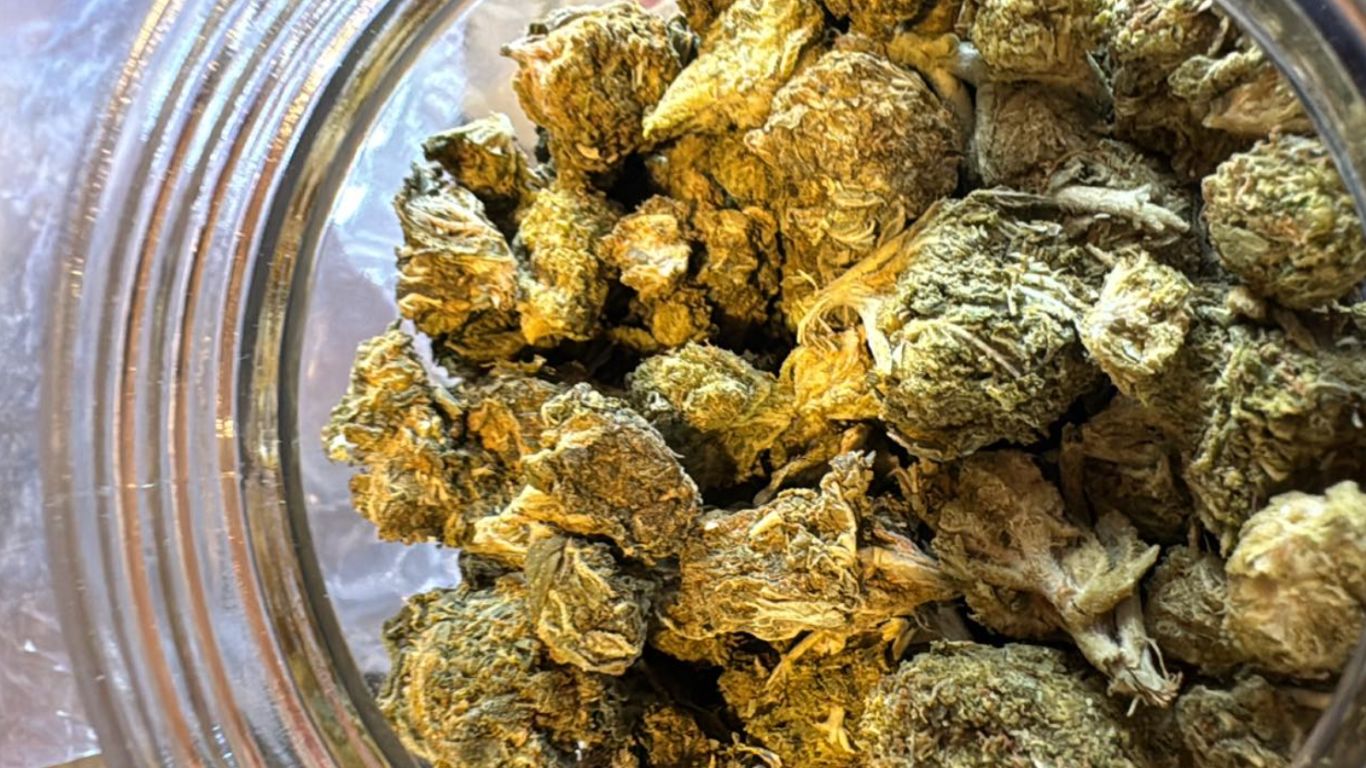






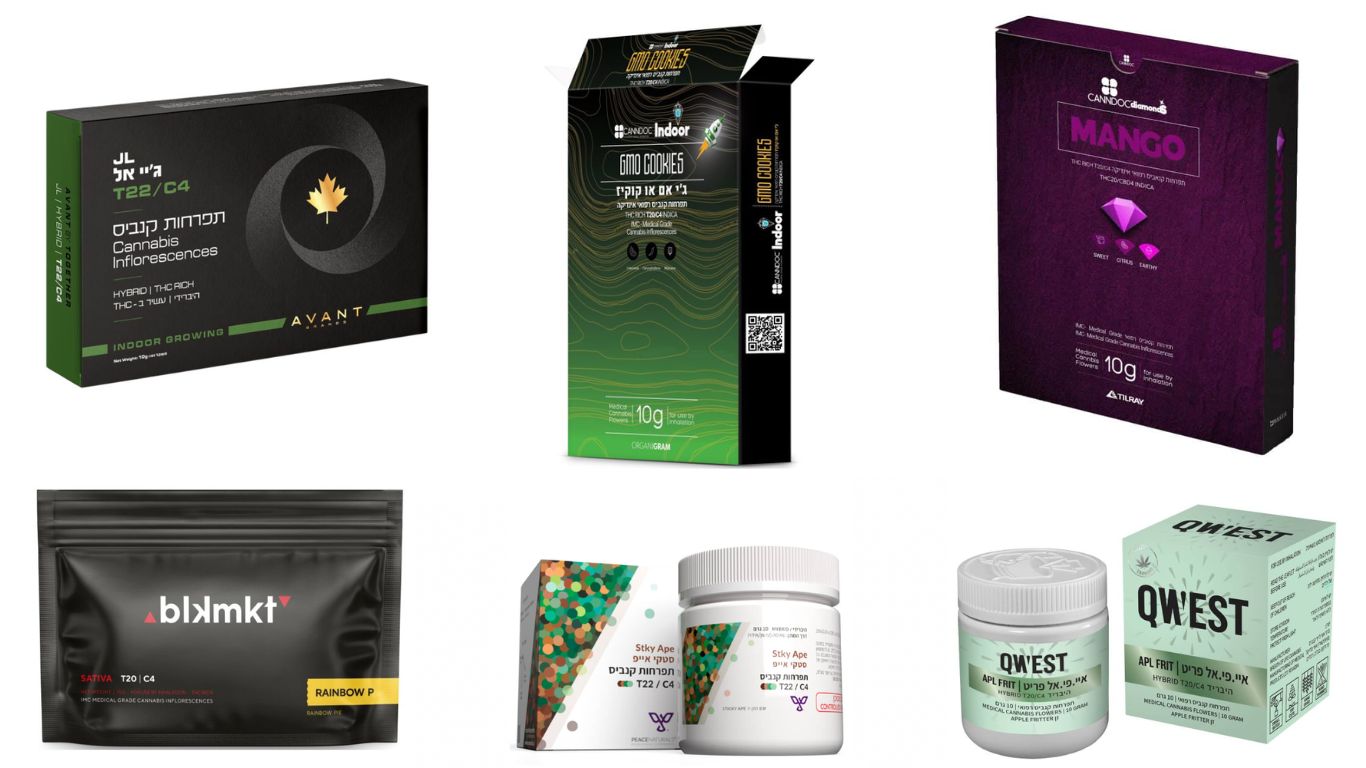


Recent Comments